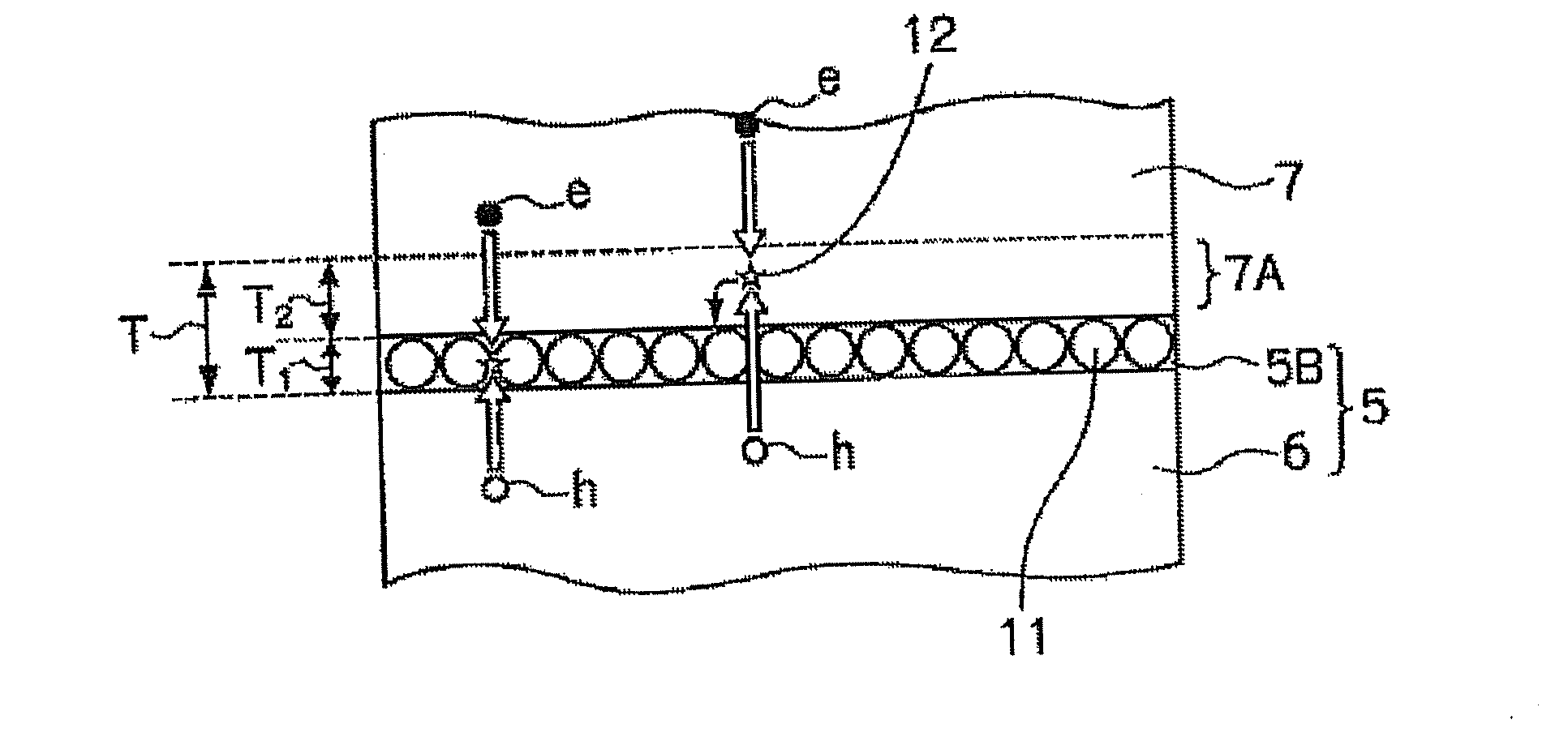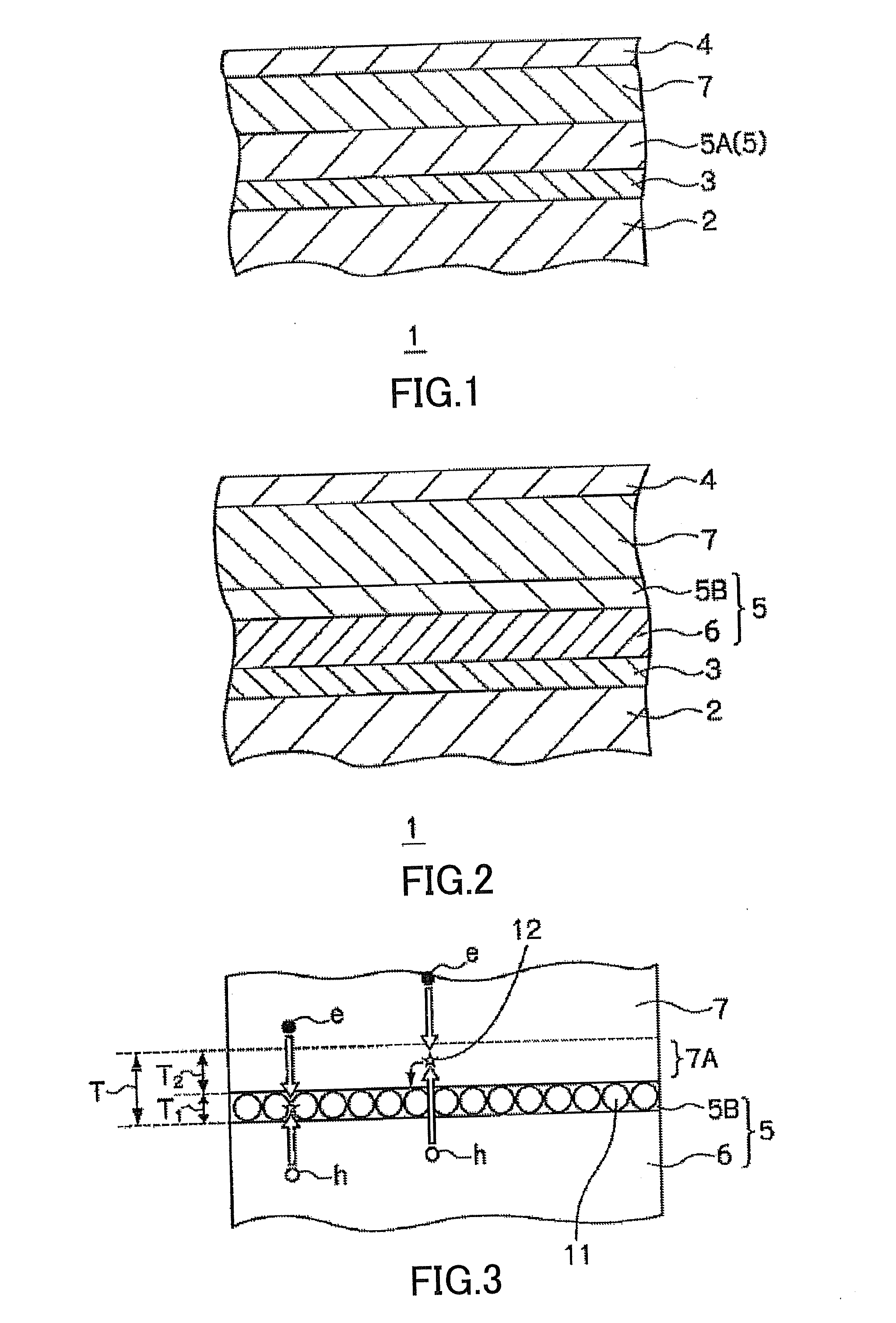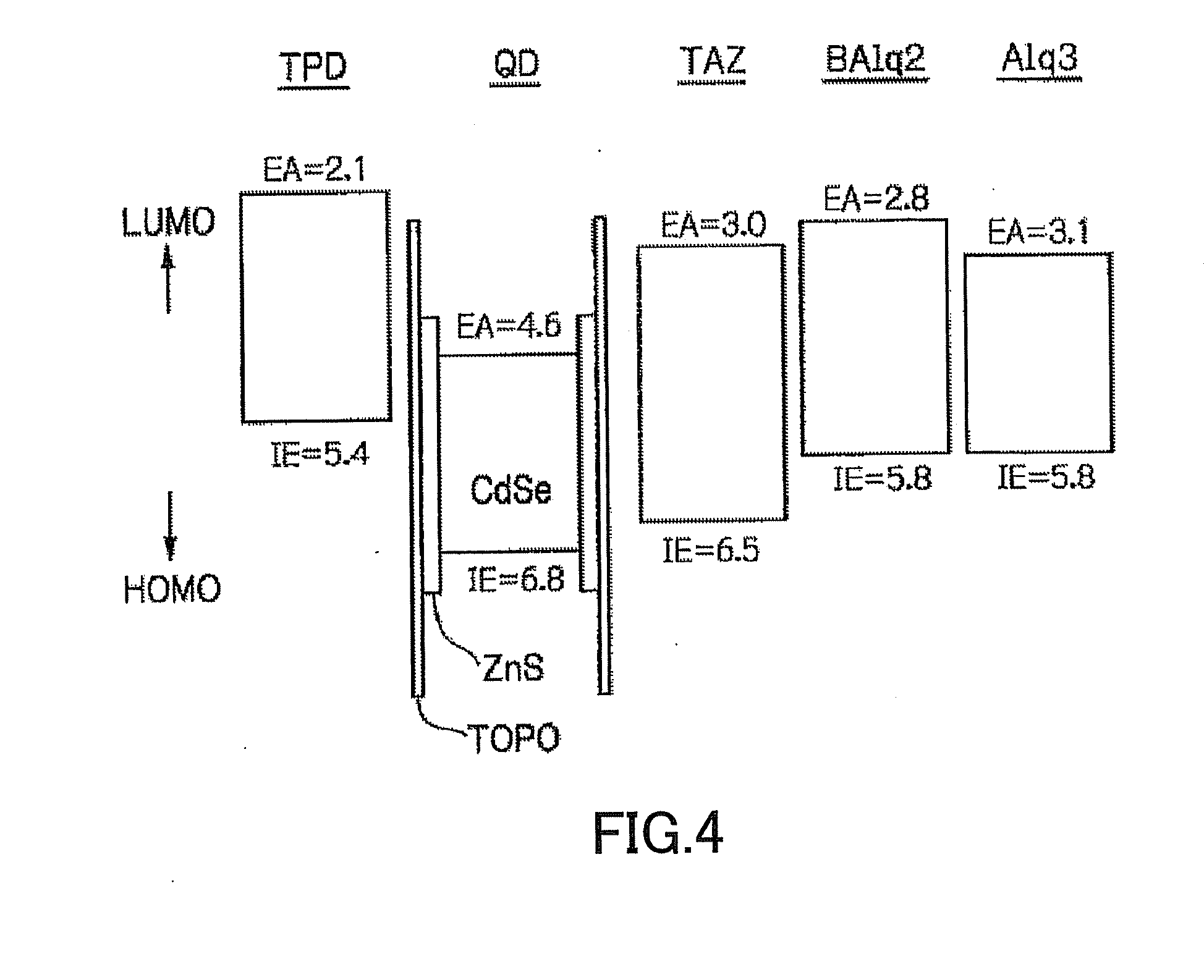Light emitting device
- Summary
- Abstract
- Description
- Claims
- Application Information
AI Technical Summary
Benefits of technology
Problems solved by technology
Method used
Image
Examples
example 1
[0083]A thin film (thickness: 150 nm) of indium tin oxide (ITO) was first formed by spattering on a glass substrate to form an anode. The substrate with the anode formed thereon was cleaned and was subjected to UV ozone treatment. Thereafter, a solution of polyethylenedioxythiophene-polystyrene sulfonic acid (abbreviated to “PEDOT-PSS”) was then spin coated in the air onto the ITO thin film, and the coating was dried to form a hole injection layer (thickness: 20 nm).
[0084]A mixed solution prepared by mixing N,N′-bis-(3-methylphenyl)-N,N′-bis-(phenyl)-benzidine (TPD) and quantum dots (core: CdSe; shell: ZnS; luminescence wavelength: 520 nm; manufactured by Evident Technologies, Inc.) with toluene was spin coated onto the hole injection layer within a glove box in a low-oxygen (oxygen concentration: not more than 0.1 ppm) and low-humidity (water vapor concentration: not more than 0.1 ppm) state to form a hole transport layer and a luminescent layer (total thickness: 40 nm). The hole t...
example 2
[0089]A light emitting device of Example 2 was produced in the same manner as in Example 1, except that the hole transport layer and the luminescent layer were simultaneously formed by coating, on the hole injection layer, the same mixed solution as in Example 1 except that the mixing ratio of TPD to the quantum dots in the mixed solution was changed to 9:5, and a 60 nm-thick electron transport layer of BAlq2 was formed instead of the electron transport layer of BAlq2 in Example 1.
example 3
[0090]A light emitting device of Example 3 was produced in the same manner as in Example 2, except that the thickness of the electron transport layer of BAlq2 in Example 2 was changed to 40 nm.
PUM
 Login to View More
Login to View More Abstract
Description
Claims
Application Information
 Login to View More
Login to View More - R&D
- Intellectual Property
- Life Sciences
- Materials
- Tech Scout
- Unparalleled Data Quality
- Higher Quality Content
- 60% Fewer Hallucinations
Browse by: Latest US Patents, China's latest patents, Technical Efficacy Thesaurus, Application Domain, Technology Topic, Popular Technical Reports.
© 2025 PatSnap. All rights reserved.Legal|Privacy policy|Modern Slavery Act Transparency Statement|Sitemap|About US| Contact US: help@patsnap.com



